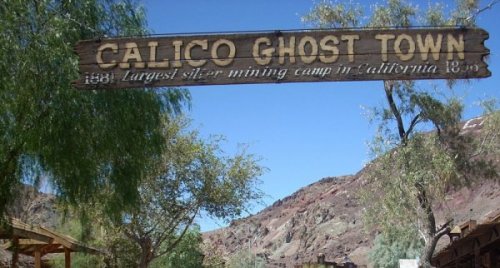The oldest communication service in Calico Ghost Town
Calico Ghost Town was a special interesting visiting place in the US West region. More hundred years ago, the town of Calico was bustling with prospectors searching for its mineral riches. Silver was king here and the Calico Mining district became one of the richest in the state. Calico town was born in March 1881 with 40 people. Next year, 1882, Calico population increased 7 times to 300 people. Mining increased very fast. Calico could boast boom-town status, producing 86 milion usd in silver, 45 milion usd in borax. While highest business, 1887, Calico had 1200 inhabitants. Next two years, Calico population changed: decreased to 500 residents in 1888 and increased to 800 residents in 1889. In its golden age, this town had 22 saloons.
 |
| Calico Ghost Town |
However, after silver and borax mining became exhausted, inhabitants removed to other places. After solutions to keep the town survive but inhabitants were very little: 10 residents in 1951, 15 residents in 1981 and then 8 residents in 2001, Administration decided that Calico town became a visiting place. They called donations from supporters to keep this town like as memorial of past time when people came West to find gold. The town was named “Ghost Town” to attract tourist’s imagination. However we did not have opportunity to see any ghost in this town to satisfy our imagination. The reason could be that we came Calico at noon when desert area in the West American region was very hot, higher 40oC temperature, maybe all ghosts stayed at shelters to avoid sun and hot weather. Along main road of Calico town, we visited houses of hundred-years-old style. Visitors could image about old West American people by men-mannequins with gun in belt, felt hat, jeans and womenmannequins with chignon, needleworks beside window. Music from old bar, old shop but only tables and chairs stayed there; no customers, no seller, nobody.
 |
| Telegraph box in a Museum |
We saw the Post at a corner in Calico Ghost Town. Wow. It was a special memory of Post, the oldest communication service. In other museums in US, visitors always could find models of the post or telegraph box at a corner of the museum. Information and communications services are being very important for life and society from more hundred years to now.
Quy Minh

















